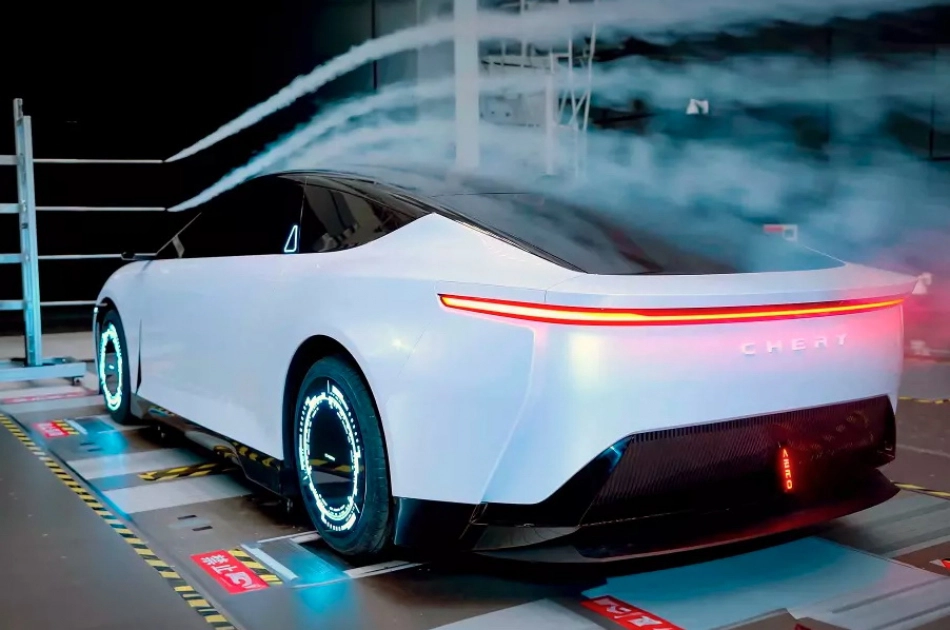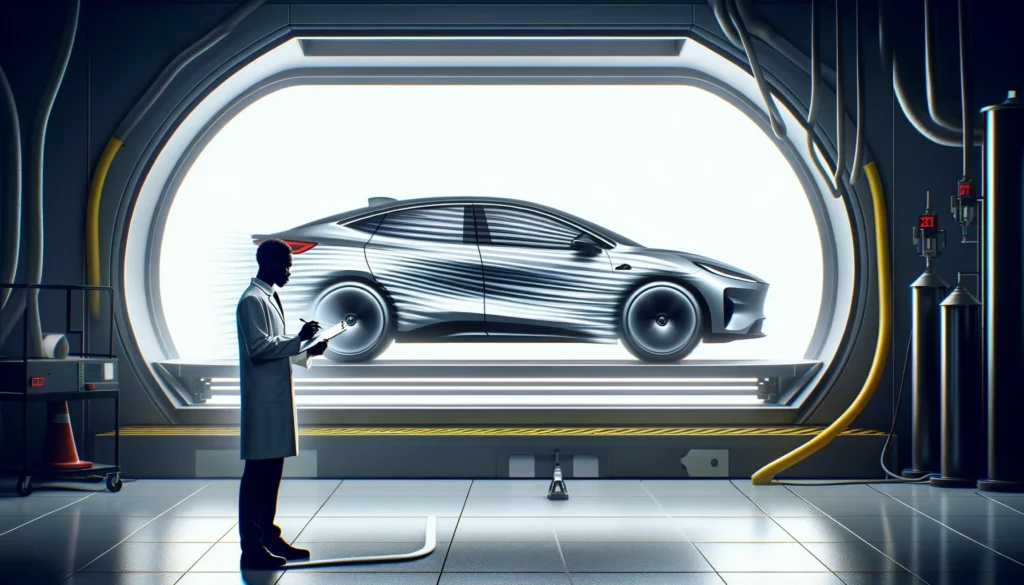In the ever-evolving world of electric vehicles (EVs), Chinese automaker Chery has taken a bold leap into the future with a groundbreaking concept that draws inspiration from an unlikely source—the tuna fish. Chery claims that this innovative EV concept is not only aesthetically inspired by this hydrodynamic creature but also boasts the title of being the most aerodynamic car in the world.
Let’s dive deeper into this remarkable development and explore the implications for the future of automotive design and performance.
Chery’s Visionary Approach to EV Design
Chery Automotive, one of China’s top 10 largest automakers, has been at the forefront of electric vehicle innovation since it unveiled its first electric car back in 2009. Initially, the company had aspirations to enter the U.S. and European markets, but changes in strategy shifted its focus, and now it appears poised to make its mark in Europe within the next couple of years.

One of the standout features of Chery’s latest concept is its remarkable aerodynamic design, which claims to have a coefficient of drag (Cd) of just 0.168. This exceptional aerodynamic performance was achieved through rigorous wind-tunnel testing conducted in August. What makes this achievement even more impressive is the use of “AI simulation techniques” that explored over 2,000 different configurations, all inspired by the tuna fish—a creature known for its remarkable hydrodynamic properties.
Understanding the Importance of Aerodynamics
Aerodynamics play a crucial role in the efficiency and performance of vehicles, particularly at higher speeds. This concept can significantly impact highway range, making it a vital consideration for electric vehicles aiming to maximize efficiency. While it may be less relevant for urban vehicles that predominantly travel at lower speeds, the potential for enhancing efficiency on the open road is substantial.
The fascinating aspect of Chery’s approach is the unique source of inspiration: the tuna fish. The idea that a sea creature’s design could be applied to land-based vehicles underscores the intricate relationship between design, nature, and technology. Tuna fish are renowned for their sleek and hydrodynamic maneuvering through water, making them a prime model for achieving exceptional aerodynamics in a car.
Chery’s Leap into the Future
Chery’s unveiling of this groundbreaking concept car was met with great enthusiasm as the automotive world eagerly awaited the results of its innovative approach to aerodynamics. The company explained that its design team meticulously studied the tuna fish, harnessing the creature’s hydrodynamic prowess and integrating it into the vehicle’s design.
A Glimpse of the EV Aerodynamics Testing Process
To better understand the significance of Chery’s achievement, it’s essential to delve into the testing process that led to this groundbreaking Cd rating. The official wind-tunnel testing took place in August and was a critical step in validating the concept’s aerodynamic capabilities. The rigorous testing procedure scrutinized the car’s performance under various wind conditions and speeds, confirming its status as the world’s most aerodynamic car.
The concept’s design and testing process were enriched by the use of AI simulation techniques, which explored over 2,000 different optimization cases. This data-driven approach enabled Chery to fine-tune the vehicle’s design, ultimately achieving the remarkable Cd rating. This combination of nature-inspired design and cutting-edge technology showcases the synergy between art and engineering in the realm of electric vehicle development.
A Potential Game Changer in the EV Market
Chery’s Tuna-Inspired EV Concept is more than just a prototype; it represents a potential game changer in the EV market. The achievement of a 0.168 Cd opens up new possibilities for EV manufacturers to maximize efficiency and range while reducing energy consumption and environmental impact. While this concept is not yet in production, it serves as a bold statement of Chery’s commitment to pushing the boundaries of automotive design and technology.
A Challenge to Existing Records
The world of automotive aerodynamics has seen various records and claims over the years. Chery’s concept has set a new bar for aerodynamic efficiency, potentially surpassing previous contenders. For example, the GM EV1, an electric car from the late 1990s, held the title of the most aerodynamic production car in the U.S. market with a Cd of 0.19. Since then, several companies have aimed to surpass this record, with varying degrees of success.
The Lightyear 0, with a Cd of 0.175, claimed the title of the most aerodynamic production car but saw limited production before the company changed direction. Aptera Motors, another solar EV startup, has ambitious plans to shatter existing records, aiming for a Cd between 0.13 and 0.15.
While Chery’s concept has grabbed the spotlight for now, the title of the world’s most aerodynamic car may still be up for grabs, pending further developments and confirmations from other manufacturers.
Future Prospects for Aerodynamic EVs
Chery’s concept represents a glimpse into the future of electric vehicle design and the potential for groundbreaking aerodynamics. As EVs continue to gain prominence in the automotive industry, achieving exceptional efficiency and range becomes increasingly vital. Aerodynamics will play a crucial role in shaping the next generation of electric vehicles, making them more competitive and sustainable.
Chery’s innovative approach, drawing inspiration from nature and harnessing AI simulation techniques, could pave the way for more efficient and environmentally friendly EVs. It also highlights the growing interest in developing sustainable transportation solutions that draw inspiration from the natural world.
The Competitive Landscape
Chery Automotive is not the only player in the electric vehicle market striving to redefine aerodynamic standards. Several other automakers have made significant strides in this area.
Lucid Motors, for instance, claimed to have the most aerodynamic luxury car with its Air sedan, boasting a Cd of 0.21. This performance places it in close competition with the likes of the Mercedes-Benz EQS and Tesla Model S. The pursuit of aerodynamic excellence is not limited to one automaker or region; it’s a global endeavor to improve the efficiency and sustainability of EVs.
Additionally, China’s Nio has claimed the title of the most aerodynamic SUV with its EC7, showcasing the industry’s commitment to enhancing aerodynamics across various vehicle segments.
The EQXX Concept by Mercedes-Benz
Mercedes-Benz, a pioneer in automotive innovation, also threw its hat into the ring with the EQXX concept, boasting a Cd of just 0.17. While concept cars often push the boundaries of technology and design, the challenges of transitioning from a concept to a production model can be substantial. However, Mercedes-Benz’s commitment to aerodynamic excellence is evident in its efforts to explore new engineering solutions that can help break free from the electric vehicle weight spiral.
Chery’s concept car joins this esteemed group of innovators, positioning itself as a frontrunner in the race for the most aerodynamic vehicle. Whether it will reach production and maintain its remarkable Cd is yet to be seen, but it marks a significant step forward in the ongoing quest for greater efficiency and sustainability in the electric vehicle industry.
Chery’s Expanding Horizons
Chery Automotive’s impact extends beyond its innovative aerodynamic concept. The company has a robust presence in China and exports its vehicles to various overseas markets, including Brazil, Iran, North Africa, Pakistan, Uruguay, Venezuela, and Vietnam. In addition to its established marques like Chery and Karry, the automaker has introduced a new iCar brand targeting younger consumers and a marque developed in collaboration with Huawei called Luxeed.
In a bold announcement during its tech day, Chery revealed plans to introduce a total of 39 new energy vehicles (NEVs) over the next two years. This impressive lineup includes 15 battery electric vehicles (BEVs) and 24 hybrids, reflecting Chery’s commitment to expanding its portfolio and meeting the evolving needs of consumers.
The Future of Electric Vehicles
Chery’s tuna-inspired EV concept represents a bold step into a future where electric vehicles are not only sustainable but also highly efficient. The fusion of nature-inspired design and advanced AI simulation techniques showcases the innovative spirit that drives the EV industry forward. As we anticipate Chery’s entry into the European market and the potential production of this concept, it will be fascinating to witness how these groundbreaking developments shape the future of electric mobility.
In a world where environmental concerns and energy efficiency are paramount, Chery’s quest for aerodynamic excellence holds promise for a more sustainable and efficient future in the automotive industry. Whether Chery’s concept becomes the undisputed leader in the field of aerodynamics or opens the door for further innovation, it reminds us of the limitless potential for creativity and ingenuity in the pursuit of sustainable transportation solutions.


